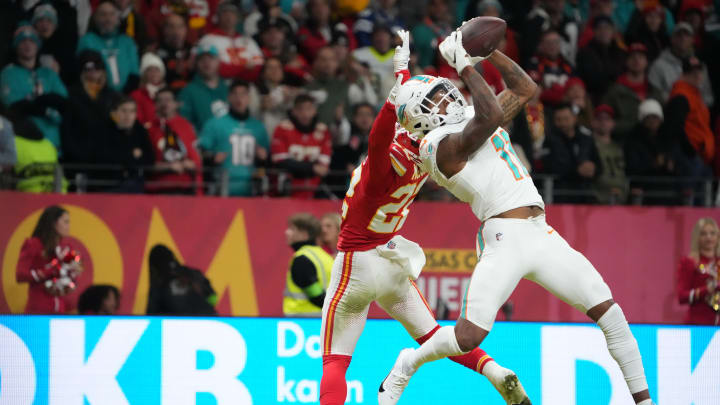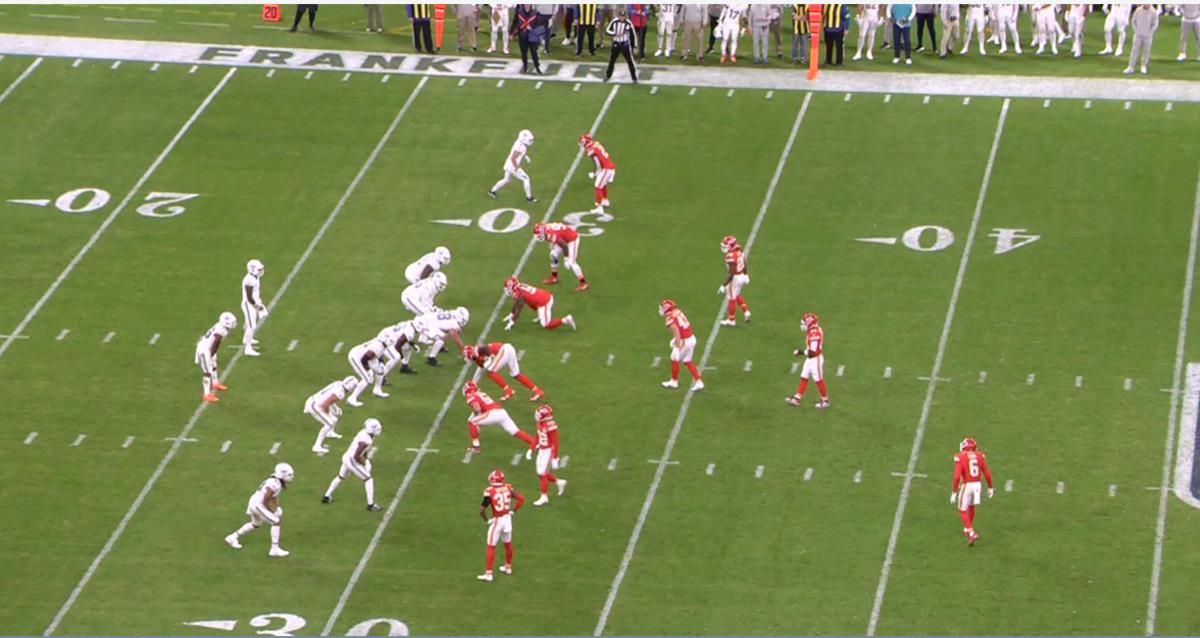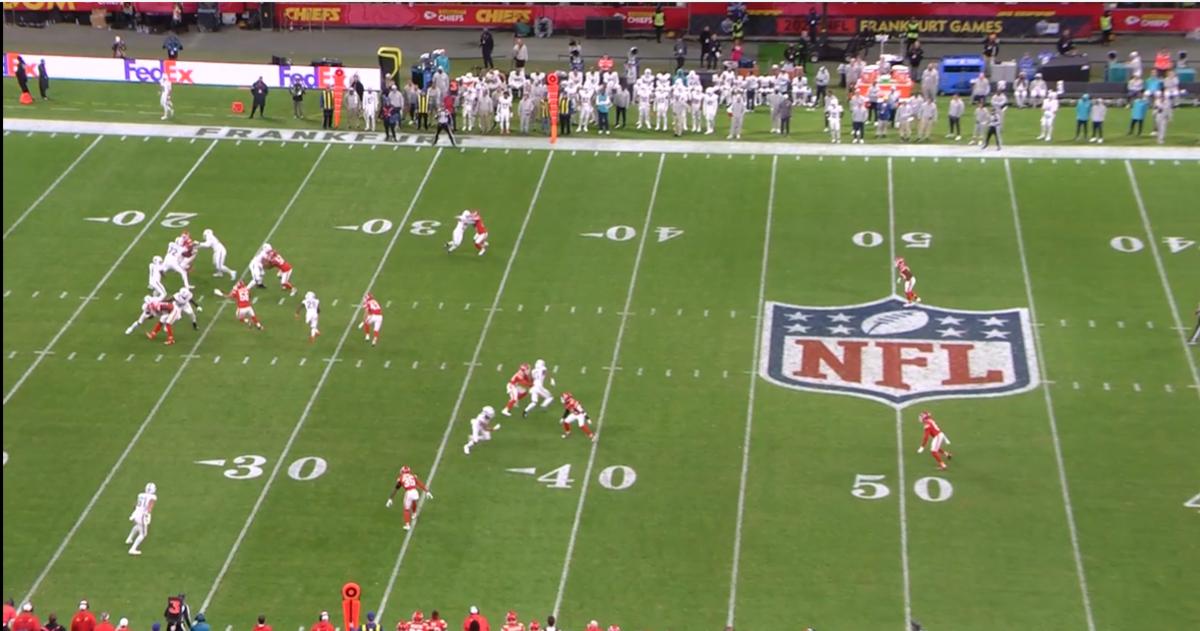Do the Dolphins Have a WR3 Problem?

There were a lot of problems for the Miami Dolphins offense in their loss against the Kansas City Chiefs.
Penalties, near misses, and fumbled snaps dominated the public discourse, but one issue wasn’t discussed enough.
The Dolphins have a WR3 problem. There’s no denying how good Jaylen Waddle and Tyreek Hill are, but Miami’s depth receivers aren’t equipped to run their unique offense the way Waddle and Hill are.
That came to light Sunday when Waddle was limited by a knee injury throughout the game. Waddle’s injury forced Cedrick Wilson Jr. to play a season-high 41 snaps, the second-most among Dolphins receivers.
Wilson caught Miami’s only touchdown pass against the Chiefs, but one look at the film would tell you Wilson having the second-most snaps isn’t sustainable.
Speed Is What Makes Miami’s Offense Go
The Dolphins’ wide receiver depth is an issue because the whole offense is built around one thing: speed. Coach Mike McDaniel has designed an offense around maximizing the talents of Waddle, Hill, and Tua Tagovailoa.
Hill and Waddle arguably are the fastest receivers in the sport, and Tagovailoa thrives on anticipatory throws against zone coverage. The offense is designed around Tagovailoa throwing to spots and his receivers being there on time.
This results in some weird numbers for Tagovailoa. Miami’s quarterback has a 2.38 second Time to Throw, which ranks first in the NFL per NextGenStats. However, Tagovailoa also leads the NFL in Air Yards (1,599).
For reference, Trevor Lawrence ranks second in Time to Throw (2.41 seconds) but ranks 14th in Air Yards.
Hill and Waddle’s speed allows Miami to cheat conventional offense. They can get downfield and get the ball out quickly. It protects Miami’s offensive line and helps Tagovailoa be the best version of himself.
However, it’s entirely reliant on Hill and Waddle’s remarkable speed.
Why Miami’s Depth Won’t Cut It
Besides Hill and Waddle, the Dolphins looked to Wilson, Chase Claypool and Braxton Berrios to play significant snaps Sunday. But those guys — through no fault of their own — are not Hill and Waddle.
They each have individual flaws holding them back. Wilson struggles to create separation against man coverage, Claypool is a poor route runner, and Berrios struggles against press coverage.
The Chiefs understood those limitations and used them against the Dolphins when Hill and Waddle were out of the game.

This picture is a pre-snap look of a second-and-five the Dolphins had with 22 seconds left in the second half. At the bottom of the screen, the Dolphins have Wilson and Claypool in a trips formation with Durham Smythe. Berrios is at the top of the screen with a press corner across from him.

Here’s that play once the receivers start running their routes. Claypool isn’t running a real route, Wilson is blanketed, and the press coverage completely jams up Berrios. All of Tagovailoa’s primary options are covered.
The timing that makes Miami’s offense so unique had no chance on this play because the Dolphins receivers are taking too long to get into their routes.
It also limits the Dolphins’ ability to create big plays. When Hill is off the field, Miami’s Boom% — an explosive play for the offense — drops from 23 to 16 percent. The Dolphins’ other receivers aren’t creating chunk gains consistently.
This isn’t to say Berrios or Wilson aren’t valuable players. They have important roles. Wilson is a good contested catch player; he proved that with his touchdown reception in Week 9. Berrios is a fine change-of-pace player and return man.
However, they can’t do what Hill and Waddle do, and it mucks up Miami’s entire operation. The Dolphins don’t know how to operate any other way in the passing game.
Potential Solutions
Unfortunately for the Dolphins, their options to upgrade the WR3 spot are pretty limited. The trade deadline has passed, and the free agent options aren’t appealing.
The Dolphins did hold wide receiver tryouts Tuesday. One notable name was former Cleveland Browns receiver Anthony Schwartz. Schwartz’s 4.27 40-yard dash time fits Miami’s prototype at the position, so it makes sense they’d give him a look.
However, the Browns released Schwartz because he struggled with drops and wasn’t a consistent route runner. Although Schwartz’s speed is appealing, he doesn’t solve any of the team’s depth issues.
Miami’s best chance to see improved WR3 play is looking inward.
Two players stick out as potential upgrades. The first is River Cracraft, who has been on injured reserve with a shoulder injury. It’s unclear if Cracraft will be healthy when Miami returns from its Week 10 bye.
However, he has one thing Berrios, Claypool, and Wilson are lacking — chemistry with Tagovailoa. Again, timing is an essential element of the offense’s success. Receivers must be in the right spot when Tagovailoa expects them to be there.
In Cracraft’s limited usage the past two seasons, Tagovailoa and Cracraft have hooked up on some pretty daring routes. Remember this touchdown against the Bills last season?
Tua ties it up! #FinsUp
— NFL (@NFL) September 25, 2022
📺: #BUFvsMIA on CBS
📱: Stream on NFL+ https://t.co/AgvEitKLgz pic.twitter.com/1Ny4CMv5TJ
Cracraft isn’t a world-beater, but he’s a better fit for the offense than players like Claypool and Wilson.
The other internal option the Dolphins have is giving more snaps to Robbie Chosen, who didn’t play against the Chiefs. Chosen has played in four games this season and has two targets and one reception.
So, why is he a potential asset for Miami? He’s the only other receiver capable of matching Hill and Waddle’s speed. Chosen, who ran a 4.36 40-yard dash at his pro day, could at least reach his spots with the same urgency as Hill and Waddle.
However, his lack of playing time likely means he doesn’t have chemistry with Tagovailoa.
In reality, the Dolphins don’t have many good options to supplement their passing attack outside of their top two pass-catchers.
They made their bed when the only trade they made before the deadline was for a receiver who couldn’t even get on the field for the lowly Bears.
